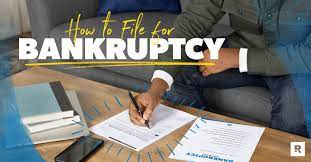Contents
Filing Bankruptcy – Should You File Bankruptcy Or Should You Not?
Filing Bankruptcy – What do you think is the best stimulus package for American consumers? Prior to the passage of the American Financial Protection Act of 2009, many people were putting their hope in the stimulus bill. So, let’s talk about the stimulus package and let’s look at the different benefits under Section laps of the stimulus bill.
American Recovery and Supplemental Benefits Act of 2009
Rates up for individual filers
$600 for those who filed jointly
$1,200 for those who are filing separately.
These credit amounts change every year and the last change was in 2009. So, for a taxpayer or those who are planning to file separately or jointly, the 2009 credit amounts should be used. Otherwise, filing separately or jointly will not save you any money. The average credit is $400.00, so if you file individually and your spouse also does not itemize, your tax bill will be less than $800.00 and you’ll probably qualify for the $600 credit. If your adjusted gross income was $99,000.00 or more in 2009, you must file separately and pay taxes on the $600 credit. 비대면 신용 대출 해주는 곳
American Opportunity Tax Credit
This was a very popular credit. It was worth $2,500 to those who had previously filed and received credit. The bill to qualify for this credit was $500 or $75 per qualifying child. So, the maximum credit for 2009 is $2,500. The bill to qualify for this credit was passed earlier this year and was worth $750 for those who filed previously. So, there is no impact on those who filed prior to the credit coming into effect.
American Opportunity Credit
While this credit sounds good, there are only two ways for the credit to wind up being a refundable tax credit. First, the credit was not refundable! The more you put into the credit over the number of years that you apply for and receive the credit, the better the chances are for you having your tax return reviewed for refundability. Second, you have to be eligible for “an income tax return” with a tax liability. The credit was refundable for those with no tax liability. This means that if you were refundable to the government for this credit, you would be refunded $550.00 (if you would have had a tax liability of $750.00). Even if you had a tax liability of $500.00 the government would re-refund you $550.00. Those who were not eligible for the credit did not get the benefit of the credit. So, if you did not qualify for the credit or were not eligible for the credit but received the credit because you owed taxes, the value is zero. So, if you have a refund for this credit amount the only benefit is your losing any tax liability with no tax liability. So, there really is no benefit. Filing Bankruptcy
Education Tax Credit
Sections combustion 1 and 2 of the American Recovery and Reinvestment Act of 2009 increased the American Opportunity Tax Credit to $2,500.00. Congress passed this bill in 2009 and, like the American Recovery and supplemental Benefits Act, included a refundable credit also. There was one major change in the bill. Whereas the American Recovery and Supplemental Benefits Act of 2009 gave two distribution credits to taxpayers, one at an amount of $400.00 and one at a $600.00 level, there was only one credit in the new law for education expenses with a refundable amount equal to the cost times a fraction of the expenses times zero. Therefore, according to the new credit, taxpayers are refunding a equal amount of $100.00 at the $400.00 level and at $600.00 level. There is a matching of $100.00 for each $1,000.00 of any “qualified education expense” that is used for higher education. The credit is not limited to any amount of “qualified education expenses” and the credit does not include “all your darned expenses” as long as those expenses are for education, so long as you take more than five years to complete the education. This means that your expenses could include room and board, books, student fees, transportation, or any other expenses. Again, these expenses before the education could be deducted because the education would be paid for by the credit, irrespective of how many years took you to finish your education. Problem: The American Recovery and Reinvestment Act of 2009 allows claim of the first $2,000.00 of “qualified education expenses.” Any higher education costs above and beyond the two hundred and fifty dollars would still be claimable.
College Cost Redittance Tax Credit
The American Recovery and Reinvestment Act of 2009 also increased the tax credit for enrolling for the tuition benefit of online or virtual classes for higher education.
